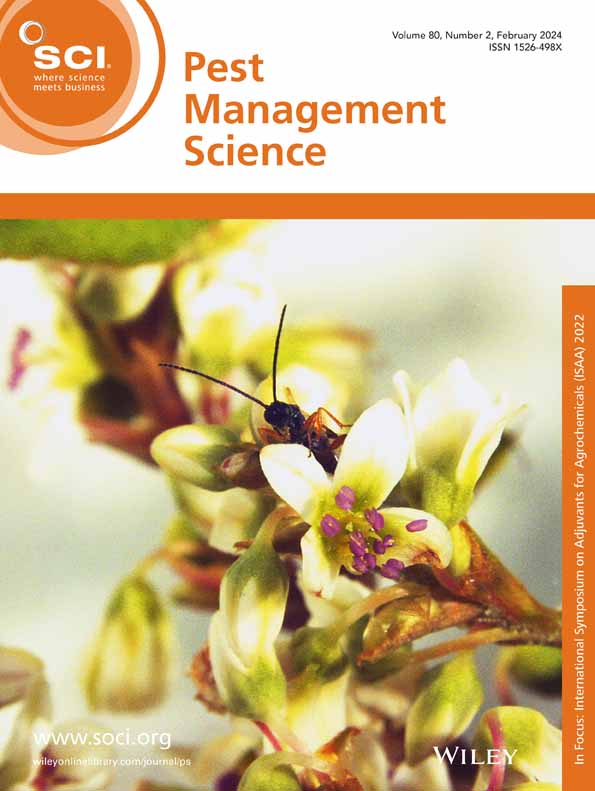足迹鉴别提高入侵鼠同属种的鉴定
IF 3.8
1区 农林科学
Q1 AGRONOMY
引用次数: 0
摘要
背景:准确识别隐种是入侵物种监测的关键。足迹调查通常作为一种间接的啮齿动物监测方法,但调查人员可能会错误识别密切相关的物种。机器学习技术可以通过训练已知足迹的统计算法来实现物种识别,然后使用所得模型对未知物种的足迹进行分类,从而减少观察者的误差。该工具在入侵鼠类的识别和生物安全管理中具有重要的应用价值。结果采用线性判别分析(LDA)和极端梯度增强(XGBoost)方法对新西兰两种同属入侵鼠——太平洋鼠(Rattus exulans)和船鼠(Rattus Rattus)的足迹进行区分,验证了方法的准确性。我们使用墨水跟踪隧道收集足迹,并提取足迹的几何轮廓。我们建立了已知物种足迹的线性判别模型和XGBoost模型,进行了十倍交叉验证,然后将模型应用于未知物种的足迹分类。模型的预测准确率均≥90%,其中前足模型(99%)略优于后足模型(94%)。结论足迹模型为鼠种鉴别提供了可靠的工具。我们讨论了模型在区分成年太平洋大鼠和幼年船鼠方面的潜在缺点,特别是在不同的种群中。我们建议使用跟踪隧道和足迹模型来评估同类鼠种的入侵和再入侵,并提倡将该技术用于识别和区分其他啮齿动物物种。©2025 Landcare Research New Zealand Limited及作者。《病虫害管理科学》由John Wiley &出版;我代表化学工业协会的儿子有限公司。本文章由计算机程序翻译,如有差异,请以英文原文为准。
Discriminating footprints to improve identification of congeneric invasive Rattus species
BACKGROUNDAccurate identification of cryptic species is critical for invasive species monitoring. Footprint surveys are often used as an indirect rodent monitoring method, but surveyors can misidentify closely related species. Machine learning techniques can reduce observer errors by enabling species identification through training of statistical algorithms on known footprints and then classifying the footprints of unknown species using the resulting models. Such a tool has important applications for the identification and biosecurity management of invasive rodents.RESULTSWe conducted a study to test the accuracy of using linear discriminant analyses (LDA) and extreme gradient boosting (XGBoost) to distinguish between footprints of two congeneric invasive rat species in New Zealand, the Pacific rat (Rattus exulans ) and ship rat (Rattus rattus ). We collected footprints using inked tracking tunnels and extracted geometric profiles of the footprints. We built linear discriminant and XGBoost models on known‐species footprints, undertook ten‐fold cross‐validation, and then applied models to classify footprints of unknown species. The predictive accuracies of the models were all ≥ 90%, with the front foot models (99%) slightly outperforming the hind foot models (94%).CONCLUSIONFootprint models provide a reliable tool to distinguish rat species. We discuss potential shortcomings of the models in distinguishing between adult Pacific rats and juvenile ship rats particularly across different populations. We recommend the use of tracking tunnels and footprint models for assessing invasion and reinvasion of congeneric rat species and advocate the application of this technique for identifying and distinguishing among other rodent species. © 2025 Landcare Research New Zealand Limited and The Author(s). Pest Management Science published by John Wiley & Sons Ltd on behalf of Society of Chemical Industry.
求助全文
通过发布文献求助,成功后即可免费获取论文全文。
去求助
来源期刊

Pest Management Science
农林科学-昆虫学
CiteScore
7.90
自引率
9.80%
发文量
553
审稿时长
4.8 months
期刊介绍:
Pest Management Science is the international journal of research and development in crop protection and pest control. Since its launch in 1970, the journal has become the premier forum for papers on the discovery, application, and impact on the environment of products and strategies designed for pest management.
Published for SCI by John Wiley & Sons Ltd.
 求助内容:
求助内容: 应助结果提醒方式:
应助结果提醒方式:


